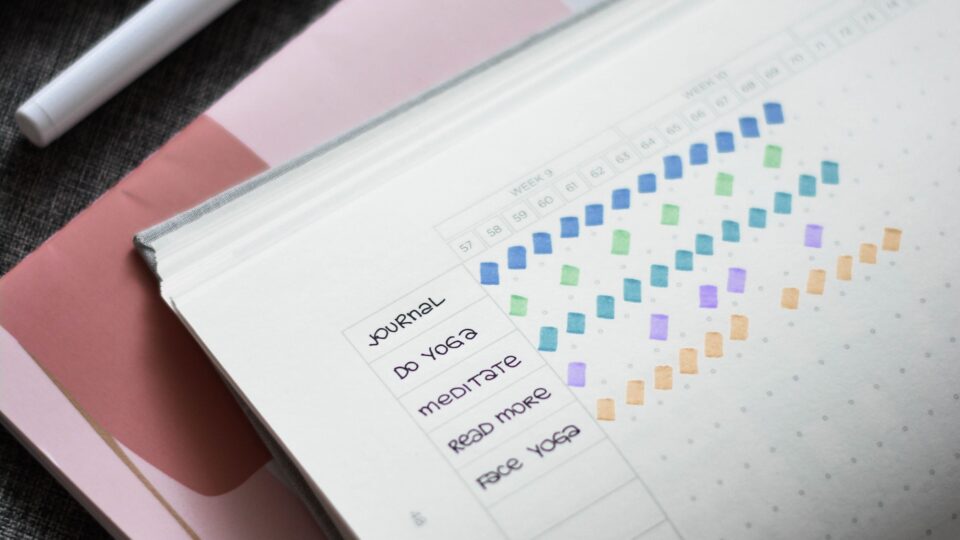How Tracking & Measuring Helps Good Habits Stick
Most of us understand the importance of building good healthy habits, particularly when seeking some sort of health enhancement or weight-related goal. When you make healthy decisions on a regular and consistent basis, the enhancements to your quality of life become apparent. We know that realistically staying committed to healthy choices during unexpected situations, in stressful times, or when tempted by old habits is difficult.
Healthy decisions aren’t always top of mind when the world around you feels a bit chaotic or distractions are all around you. So how do you make good habits stick when life seems chaotic or more challenging than usual. Today we are going to share 2 tips to make good habits stick, mainly in the form of measuring and tracking.
Think about the idea of using a calendar to countdown the number of days until a particular event. How satisfying was it to cross off each day as you got closer and closer to the anticipated date? If you have ever experienced that kind of satisfaction, it could simply be from the satisfaction that you are making progress and moving forward.
Progress is satisfying and forward momentum is motivating. Visual forms of tracking, like using a calendar to provide evidence of your progress, reinforces the process of forward movement. Measurements in other forms aside from weight tracking, can also show impressive progress (like inches lost or improvements to your SHMEC).
Engaging in new behaviors and habits that support your goals allows for the conscious creation of your new future self. Tracking and measuring progress is one way to bring into conscious awareness the habits we’re trying to build as we create that future version of ourselves.
If you have a visceral reaction to the concepts of tracking and measuring, understand that these 2 things can be the very tools that help you to make good habits stick. As coaches, we get it. Many of our clients don’t like to track and measure because it feels like a burden. Our intention is not to burden our clients, so instead reframe the process of regular tracking and measuring.
These 2 actions force you into the creation of building “sticky” habits – first it reinforces the habit you’re trying to build, and second tracking your indicators of progress with whatever system you choose helps you to stay focused and on track!
Here’s the thing. It’s easy to say, “I’ll eat less” or “I’ll work out more.” It isn’t as easy to stay committed to these desired changes. To be fully engaged in the process, you need to have an honest, non-distorted view of your behavior. Challenging yourself to notice what is actually going on by putting the evidence right in front of you is a way to identify your blindspots. Tracking and measuring allows you to have a non-distorted view of your behavior if you remain free from judgment and instead look at this as a process used for data collection.
But keep in mind, there’s no need to track and measure your entire life, just for a time to gather some objective and honest feedback. Visual tracking measures like food journals, workout logs, and habit trackers feed our desire to move forward. They are immediately satisfying because we can see proof of progress.
Doing positive things for yourself can feel exciting, rewarding, and build your confidence in the ability to live a healthy life. No doubt there will also be times when you wonder if you can stay committed to healthy habits for the long-haul. If you feel like you are failing at staying consistent, look at your off-track days as an opportunity to learn. On those days, we recommend continuing to track and measure with whatever methods you choose, and pull in some curiousity as to why things aren’t going as planned.
“Focus on opportunities not setbacks. Focus on what you can do, not what you can’t. Focus on the present moment, not the past or the future. Empower yourself!”
~ Akiroq Brost
Going back to the calendar method discussed earlier, think about how this may help your good habits stick if you’ve been struggling. Each day you engage in a new habit, you can mark “x” on your calendar (this is one example of a habit tracker). This visual proof keeps you motivated because you won’t want to break your streak! You will likely keep showing up to create your new self.
This week, think of the most important habit you’ve been trying to build into your life. Use a calendar and mark “X” immediately after engaging in that habit each day. Remember that every habit streak will end at a certain point. Life will interrupt you. But this is an opportunity to reaffirm your new identity and reclaim yourself.
Finally, remember that progress typically has hills and valleys. If you are starting to notice your motivation fading or your dedication to tracking decline, try to get back on track as soon as possible. Two days in a row free from tracking or measuring can get in the way of making good habits stick, and we know that you are capable of turning things around within 24 hours. We hope that this has helped you to see how tracking and measuring, though a bit time consuming, can be the 2 tips that help you to make good habits stick.
Photo by Prophsee Journals on Unsplash

